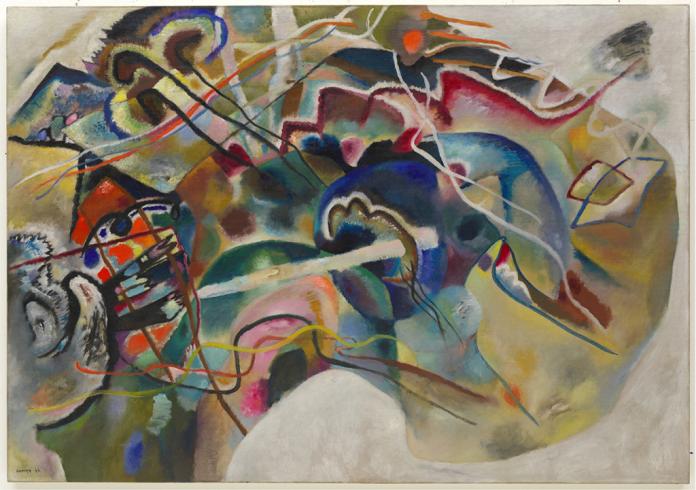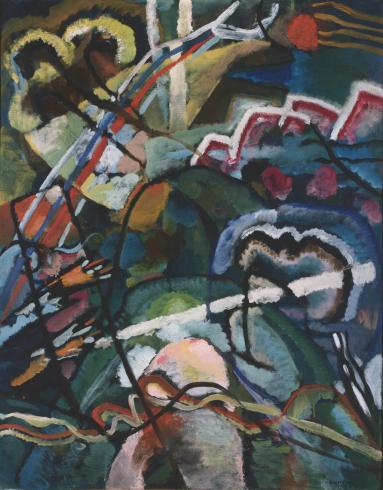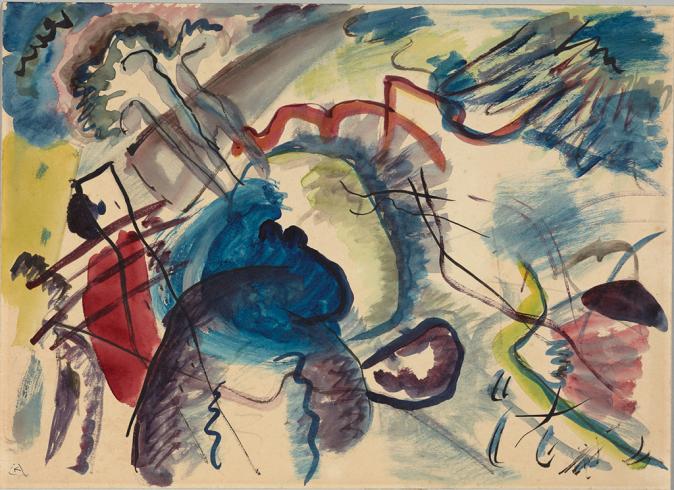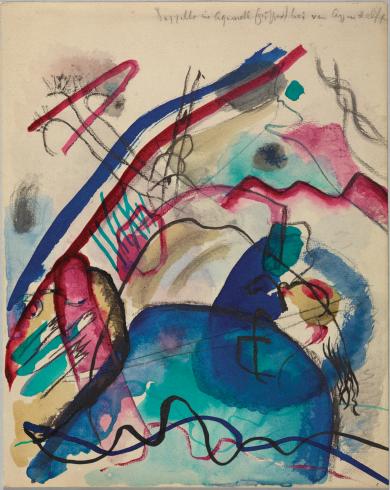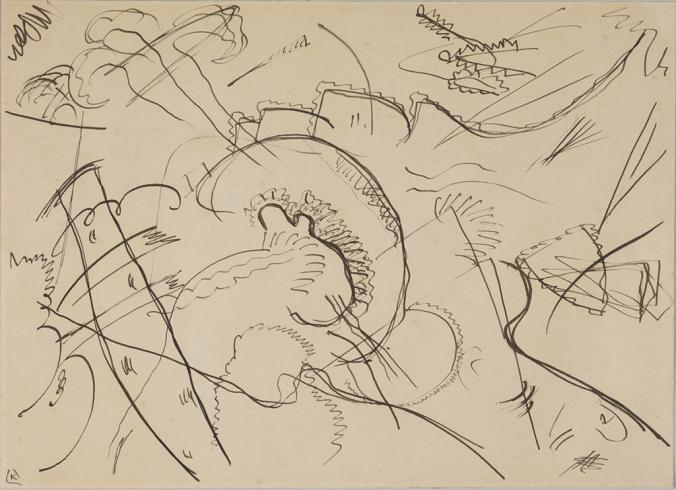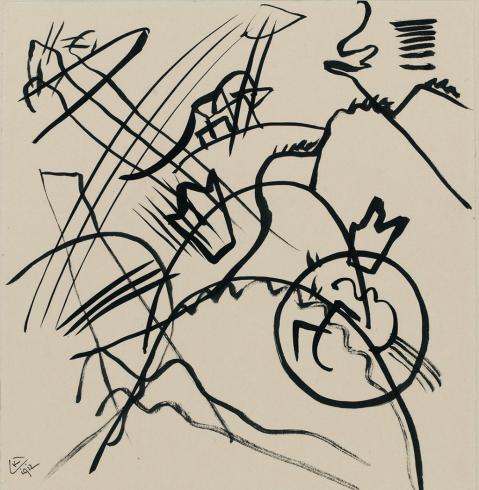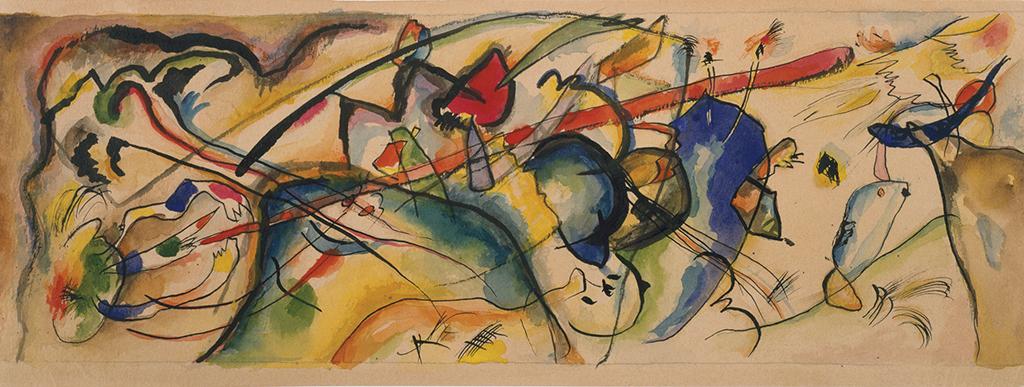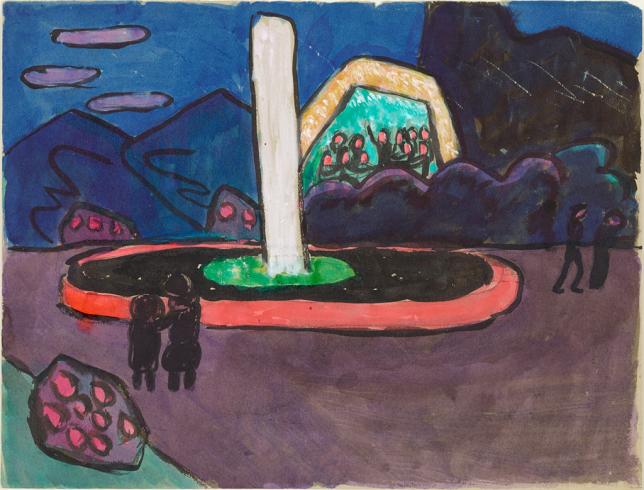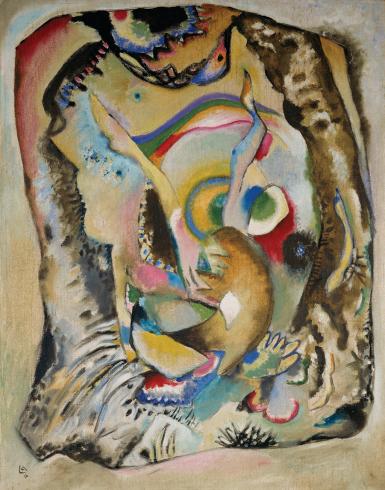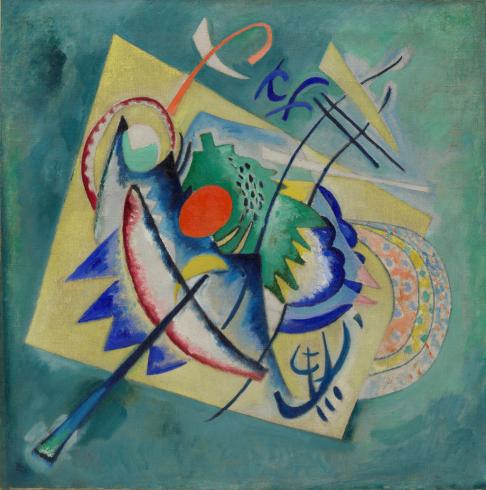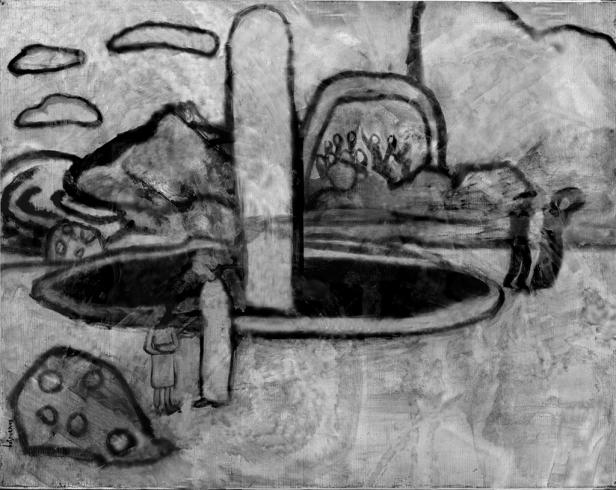Kandinsky and the Harmony of Silence
Painting with White Border
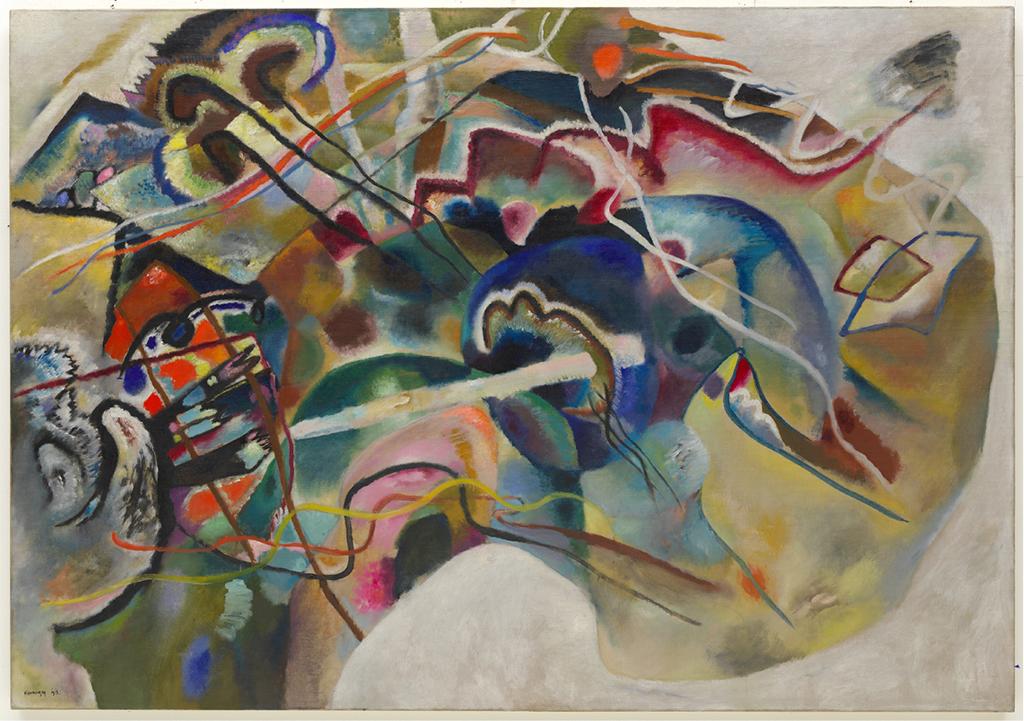
Kandinsky and the Harmony of Silence: Painting with White Border provides a fascinating, in-depth look at Wassily Kandinsky’s creative process during the five months leading up to his 1913 masterpiece Painting with White Border (Moscow), now in the collection of The Solomon R. Guggenheim Museum. For the first time in the United States, this exhibition reunites the painting with Kandinsky’s 1913 oil study Sketch 1 for Painting with White Border (Moscow), a major holding of The Phillips Collection, as well as ten other preparatory studies in watercolor, ink, and pencil.
The exhibition also highlights the results of an in-depth conservation study of the Phillips and Guggenheim paintings, including an infrared image that reveals another painting beneath the Phillips oil study.
Inspired by a visit to his native Moscow in 1912, Kandinsky sought in Painting with White Border to express his “extremely powerful impressions” of the city. His preparatory studies and the painting include veiled allusions to a troika, or three-horse sled (suggested in the painting by a three-lobed element at upper left) and to St. George and the dragon (two elements linked by a glowing white horizontal lance). Kandinsky ultimately resolved the composition by surrounding it with soft white space, the “white border” of the title. He refers to white as offering “the harmony of silence” in his seminal treatise On the Spiritual in Art (released in late 1911, with a publication date of 1912); its 2011 centennial inspired this exhibition.
During the Kandinsky exhibition, the Phillips also presents Stella Sounds: The Scarlatti K Series, contemporary works by American artist Frank Stella, a longtime admirer of Kandinsky’s ideas. In keeping with the museum’s concept of conversations between works of art, the two exhibitions—each one complete in itself—juxtapose two pioneers of abstract art, working a century and an ocean apart.
A richly illustrated, 136-page catalogue edited by Phillips curator Elsa Smithgall accompanies the exhibition.
About Wassily Kandinsky
Wassily Kandinsky (1866–1944) was an influential modern painter who grew up in Russia, but spent most of his artistic career in Germany and his last years in France. Born to a well-to-do Moscow family on December 4, 1866, he received a broad education in the humanities and took up a legal career. At the age of 30, he abandoned law and moved to Munich to study art. In 1901 he cofounded the exhibition society Phalanx, which was active until 1904. After extensive travels in France, Italy, and Russia, he settled in Munich and Murnau with his companion, painter Gabriele Münter.
In 1909 Kandinsky founded the Neue Kunstlervereinigung (New Artists Association), but he resigned in 1911 to establish the more avant-garde group Der Blaue Reiter (The Blue Rider), which grew out of his friendship with fellow artists Franz Marc, Paul Klee, and August Macke.
With the outbreak of the First World War, Kandinsky returned to Moscow, where he participated in the intellectual and artistic ferment of the Russian Revolution and briefly served in an official capacity. By late 1921, however, he was disillusioned with the new regime’s art policies and returned to Germany, joining the Bauhaus faculty in 1922. In 1933, after the Nazis came to power, Kandinsky left for Paris, where he painted the biomorphic forms for which is he is well-known. He died in Neuilly, France, on December 13, 1944.
Curator’s Notes
“Our Kandinsky painting Sketch I for Painting with White Border (Moscow) is a full-size easel picture,” says Phillips curator Elsa Smithgall. Re-uniting it with other studies and the artist’s finished work, Painting with White Border (Moscow), “provides a broader context for the Phillips work, which can easily be mistaken as an independent work of art. We’re bringing to life the whole story behind the final painting and the part that our oil study plays in it.”
Recently, conservators from the Phillips, the Guggenheim, and Harvard Art Museums unexpectedly detected another painting below the Phillips oil study, an entirely separate work by Kandinsky’s companion Gabriele Münter. “There’s no other known instance of Kandinsky painting over another artist’s work, and it’s unusual for any artist to do so,” Smithgall explains. Kandinsky specialists believe the overpainting was almost certainly done with permission from Münter: “There’s nothing in their relationship to suggest otherwise,” she says.
But the hidden painting has an effect on Sketch 1: “The colors ofSketch I appear darker and richer due to the dark green underlayer, which Kandinsky used to block out Münter’s composition. The finished painting is more luminescent, in part because there’s no underpainting.” By looking closely at this single masterwork, viewers can “gain a rare glimpse into the artist’s working process and abstract vocabulary during an intensely creative and experimental phase of his career.
A century after its publication, Kandinsky’s theoretical book, On the Spiritual in Art, remains “one of the most important texts in the history of modern art,” Smithgall says. “It outlines Kandinsky’s ideas on abstraction as an expression of the internal realm, as an artist’s personal expression, and it was hugely influential. This painting was created on the heels of that then-one-year-old publication, with the ideas still brewing in the artist. It links to this defining period in his life when he was still grappling with the relationship of the artist to the real world.”
